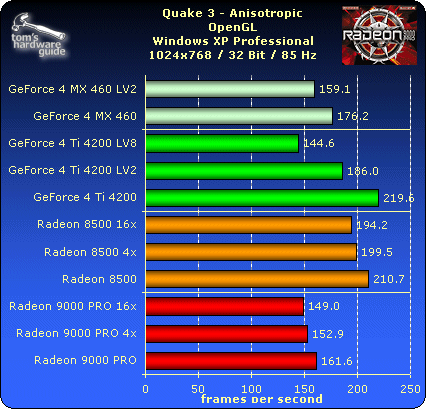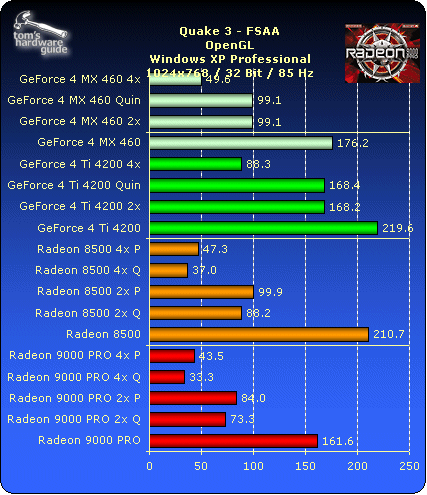The new mainstream Radeon: The 9000 series
Anisotropic Filtering
Anisotropic filtering is responsible for sharper rendering of the textures in the surroundings. Recently, NVIDIA and ATI have declared FSAA to be their favorite marketing feature. Thanks to internal driver optimization (not all textures are completely filtered), ATI's anisotropic filtering is very fast. Opinions between the two manufacturers differ quite widely as to how anisotropic filtering is exactly supposed to look. It's such a complex topic that it should be discussed in its own separate article. Here, we will limit ourselves to talking about pure numbers only.
NVIDIA and ATI give different names to their filtering levels. This table shows the filtering levels that just about match each other in terms of the resulting quality. With NVIDIA, LV2 corresponds to 4tap anisotropic filtering.
FSAA
With R8500 and R9000, ATI's solution to anti-aliasing is called SmoothVision, which is still at version 1.0. However, what's behind this fancy-sounding name is a slow, memory-bandwidth-gobbling and rather outmoded SuperSampling. Although it enables rather good image quality, it is still too slow. Even ATI's Performance Mode (indicated in the table with "P"), which sacrifices image quality, can do nothing to remedy this. Both the GeForce4 Ti and MX versions use a significantly faster multisampling technology.
The R9000 PRO falls clearly behind its older sibling, the R8500. Because Performance Mode (P) comes at a cost to image quality, a direct comparison can only be made to NVIDIA's cards in Quality Mode (Q). Here, the ATI cards clearly admit defeat to the competition from NVIDIA.
Get Tom's Hardware's best news and in-depth reviews, straight to your inbox.

